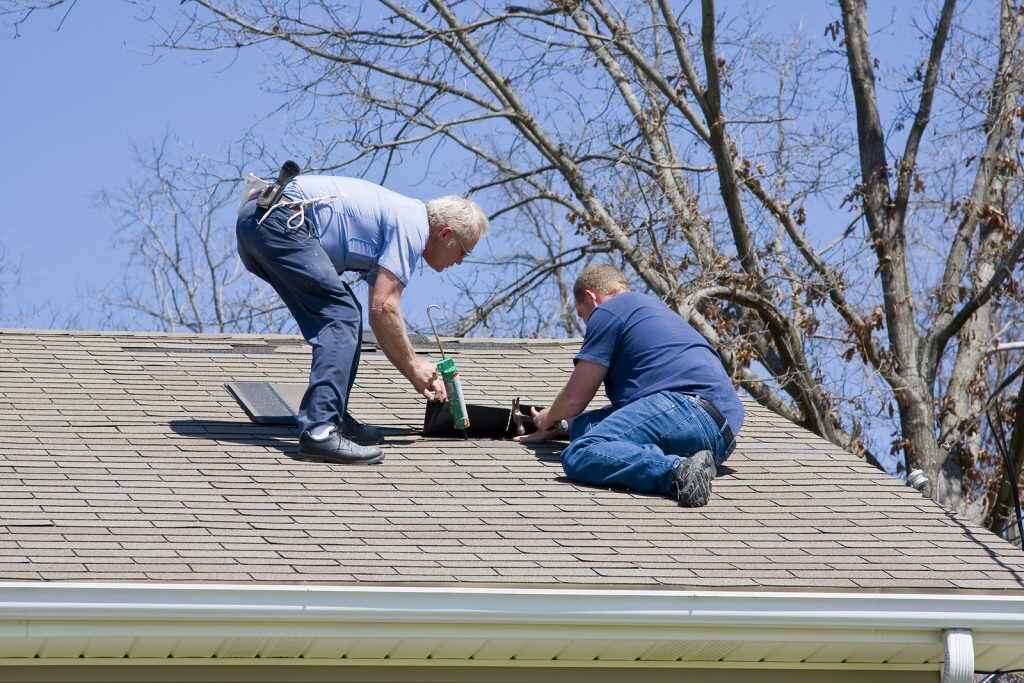Understanding various types of roof repairs is essential for maintaining a durable roof. Common shingle replacements involve evaluating shingle damage and selecting appropriate replacements, such as asphalt or metal shingles. Flashing repairs prevent water leaks by using quality materials and proper installation techniques. Roof leak detection requires careful inspection of the entire roof surface and components like shingles, flashing, vents, and skylights. Reliable roofing experts says that gutter maintenance involves regular cleaning to remove debris and inspecting for damage like cracks or rust. These repair types are important for the longevity and functionality of your roof.
Common Shingle Replacements
When addressing joint shingle replacements on a roof, it is vital to carefully assess the condition of the existing shingles to determine the extent of damage and the most suitable replacement materials. Inspecting the shingles for signs of wear, such as cracking, curling, or missing granules, is critical in identifying areas that require replacement. Moreover, checking for mold, algae growth, or rot can help prevent further damage to the roof structure.
When selecting replacement shingles, it is essential to consider the material that best suits the climate and aesthetic preferences. Options include asphalt, wood, metal, and slate shingles, each with advantages and limitations. For instance, asphalt shingles are cost-effective and easy to install, while wood shingles offer a natural look but require more maintenance.
Proper installation of replacement shingles is crucial to ensuring longevity and durability. Following manufacturer guidelines and using quality materials can help prevent future issues such as leaks or premature deterioration. By taking a thorough approach to joint shingle replacements, homeowners can maintain the integrity and appearance of their roofs for years to come.
Flashing Repairs
Effective roof maintenance often involves addressing key areas, such as flashing repairs, to guarantee proper protection against water intrusion and structural damage. Flashing, typically made of metal or other weather-resistant materials, is installed around roof features like chimneys, skylights, vents, and dormers to create a watertight seal and prevent leaks. Over time, flashing can deteriorate due to exposure to harsh weather conditions, leading to gaps or cracks that compromise effectiveness.
When conducting flashing repairs, it is essential to assess the damage’s extent accurately. This involves inspecting the flashing for signs of corrosion, rust, or bent sections that may need to be repaired or replaced. Proper installation techniques and high-quality materials are crucial to ensure the longevity of the flashing and maintain the integrity of the roof.
Regular inspections and timely flashing repairs are fundamental components of a thorough roof maintenance plan. By addressing flashing issues promptly, homeowners can avoid costly water damage and prolong the lifespan of their roofs.
Roof Leak Detection
Detecting roof leaks demands a systematic and thorough approach to pinpoint potential water infiltration sources accurately. When identifying a roof leak, inspect the entire roof surface meticulously, including shingles, flashing, vents, and protrusions such as chimneys or skylights. Begin by examining the property’s interior for water stains, mold growth, or damp spots on ceilings and walls, as these can indicate the general location of the leak. Once the interior signs are noted, inspect the roof for a detailed inspection. Check for missing, damaged, or lifted shingles, deteriorated flashing around roof penetrations, and cracked seals on vents. Moreover, pay attention to areas where water may pool or accumulate, as these spots are prone to leaks. A systematic approach to leak detection ensures that all potential sources are identified and addressed promptly, preventing further water damage to the property’s structure.
Gutter Maintenance
Inspecting and maintaining gutters regularly is necessary to prevent water damage and guarantee proper drainage on a property’s roof. Gutters are essential in directing rainwater away from the roof and the foundation of a building. To ensure that gutters function effectively, removing debris such as leaves, twigs, and dirt that can clog the system and hinder water flow is critical. This maintenance task should be performed twice a year, ideally in the spring and fall.
Additionally, inspecting gutters for signs of damage, such as cracks, rust, or sagging, is essential. If left untreated, these issues can lead to leaks, water overflow, and even structural damage. Regularly checking the gutters’ alignment and ensuring they are securely attached to the roofline is also essential in maintaining their functionality.
Other Roofing Tips
